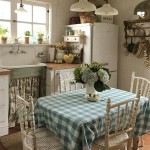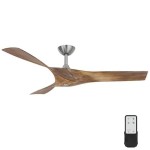Elevating Bedroom Aesthetics: Wall Art Decor Ideas
The bedroom, a sanctuary for rest and rejuvenation, deserves an ambiance that reflects personal style and promotes tranquility. Wall art plays a pivotal role in shaping this atmosphere, offering a canvas for self-expression and transforming a mundane space into a personalized haven. The selection of appropriate wall art necessitates careful consideration of factors like room size, existing décor, color palettes, and personal preferences. This article explores various wall art decor ideas, providing insights into how to effectively enhance the aesthetic appeal of a bedroom.
Selecting Art Based on Bedroom Design
The overarching design theme of the bedroom should be a primary consideration when choosing wall art. A minimalist bedroom, characterized by clean lines and muted colors, benefits from simple, abstract art pieces or a single statement piece that adds a focal point without overwhelming the space. Conversely, a bohemian-style bedroom, often featuring vibrant colors, textures, and eclectic elements, can accommodate a gallery wall with diverse art styles, patterns, and textures.
For bedrooms with a traditional design, characterized by ornate details and classic furnishings, framed prints of landscapes, portraits, or historical artwork can complement the existing décor. In a modern bedroom, characterized by sleek furniture and geometric patterns, abstract art with bold colors or geometric shapes can create a cohesive and visually stimulating environment.
The scale of the artwork is equally important. Large pieces can dominate a small room, making it feel cramped. Conversely, small pieces can get lost in a large room, appearing insignificant. Aim for a balance that complements the room's proportions and creates a harmonious visual experience.
Exploring Different Types of Wall Art
The realm of wall art encompasses a wide array of mediums and styles, each offering unique aesthetic qualities. Understanding these options allows for informed decision-making in selecting pieces that align with individual preferences and bedroom aesthetics.
Paintings: Paintings, whether original or reproductions, offer a timeless and versatile option. Oil paintings, known for their rich textures and vibrant colors, can add a touch of sophistication to any bedroom. Watercolor paintings, characterized by their delicate washes and ethereal quality, are ideal for creating a calming and serene atmosphere. Acrylic paintings, known for their durability and vibrant colors, offer a contemporary alternative.
Prints: Prints offer a more affordable alternative to original artwork, allowing for access to a wider range of styles and artists. Framed prints, canvas prints, and photographic prints are commonly used in bedroom decor. Consider the quality of the print and the framing materials to ensure longevity and visual appeal. Archival-quality prints and acid-free mats are recommended to prevent fading and discoloration over time.
Photography: Photographic prints, whether black and white or color, can add a personal touch to a bedroom. Landscapes, portraits, and abstract photography are popular choices. Consider the subject matter and composition of the photograph to ensure it complements the overall design aesthetic. Black and white photography can create a sense of timeless elegance, while color photography can add vibrancy and energy to the space.
Tapestries and Textiles: Tapestries and textile art offer a unique and textural element to wall decor. Macrame wall hangings, woven tapestries, and embroidered textiles can add warmth and visual interest to a bedroom. These pieces often feature intricate patterns and textures, adding a tactile dimension to the space. They are particularly well-suited for bohemian and eclectic bedroom designs.
Sculptural Wall Art: Three-dimensional wall sculptures can add depth and dimension to a bedroom. Metal sculptures, ceramic pieces, and wooden carvings can create a focal point and add a touch of artistic flair. Consider the scale and material of the sculpture to ensure it complements the overall design aesthetic. Avoid overcrowding the space with too many sculptural elements, as this can create a cluttered and overwhelming effect.
Mirrors: Mirrors, while functional, can also serve as decorative wall art. Strategically placed mirrors can enhance the feeling of space and light in a bedroom, making it appear larger and brighter. Decorative mirrors with ornate frames can add a touch of glamour and sophistication. Consider the size and shape of the mirror to ensure it complements the overall design aesthetic. Avoid placing mirrors directly opposite the bed, as this can disrupt sleep and create a sense of unease.
Creating a Cohesive Gallery Wall
A gallery wall, a curated collection of artworks displayed together, offers a dynamic and personalized approach to wall decor. Successfully executing a gallery wall requires careful planning and consideration of various factors, including the selection of artwork, the arrangement of pieces, and the overall visual impact.
Selecting Art for a Gallery Wall: The art pieces chosen for a gallery wall should share a common theme, color palette, or artistic style. This creates a sense of visual coherence and prevents the wall from appearing chaotic. Consider incorporating a mix of sizes, shapes, and mediums to add visual interest. Photographs, prints, paintings, and sculptural elements can be combined to create a dynamic and engaging display.
Arranging the Art: Several arrangement styles can be employed to create a gallery wall. A symmetrical arrangement, characterized by evenly spaced and aligned pieces, creates a sense of order and formality. An asymmetrical arrangement, characterized by a more organic and free-flowing layout, creates a sense of dynamism and visual interest. A grid arrangement, characterized by a structured grid pattern, creates a clean and modern aesthetic. Before hanging the art, it is recommended to lay out the pieces on the floor to experiment with different arrangements.
Framing and Matting: Consistent framing and matting can help unify the different pieces in a gallery wall. Choose frames that complement the artwork and the overall design aesthetic of the bedroom. Consider using a consistent color palette for the frames and mats to create a cohesive look. White and black frames are classic choices that complement a wide range of art styles. Matting can help protect the artwork from damage and enhance its visual impact.
Spacing and Alignment: Consistent spacing between the art pieces is crucial for creating a visually appealing gallery wall. Aim for a uniform gap between each piece, typically ranging from 2 to 4 inches. Use a level to ensure the pieces are aligned properly. Consider creating a focal point by hanging a larger piece in the center of the gallery wall or by arranging the pieces around a central object, such as a mirror or a shelf.
Consider the Background: The color and texture of the wall behind the gallery wall can significantly impact its visual impact. A neutral-colored wall provides a versatile backdrop that allows the artwork to take center stage. A darker-colored wall can create a dramatic effect and make the artwork pop. A textured wall, such as a brick or wood wall, can add visual interest and create a rustic aesthetic.
Color Psychology and Wall Art
The colors incorporated within wall art, like within any décor element, can significantly influence mood and emotions. Understanding the principles of color psychology can aid in selecting art pieces that promote the desired atmosphere in the bedroom.
Blue: Blue is often associated with calmness, tranquility, and serenity. Light blue shades can create a peaceful and relaxing atmosphere, making them ideal for bedrooms designed for rest and relaxation. Dark blue shades can evoke feelings of sophistication and elegance.
Green: Green is associated with nature, growth, and harmony. Green artwork can create a refreshing and rejuvenating atmosphere in the bedroom. Light green shades can promote feelings of peace and tranquility, while darker green shades can evoke feelings of stability and grounding.
Yellow: Yellow is associated with happiness, optimism, and energy. Yellow artwork can add a touch of warmth and vibrancy to the bedroom. However, it is important to use yellow sparingly, as excessive use can be overwhelming and stimulating.
Red: Red is associated with passion, energy, and excitement. Red artwork can add a touch of drama and intensity to the bedroom. However, it is important to use red sparingly, as excessive use can be overwhelming and disruptive to sleep.
Neutral Colors: Neutral colors, such as white, gray, and beige, are versatile and timeless choices for bedroom decor. These colors create a calming and serene atmosphere and can be easily paired with other colors. Neutral-colored artwork can provide a subtle and sophisticated backdrop for other decorative elements.
Placement Considerations
The placement of wall art is as important as the art itself. Correct placement can accentuate the artwork and optimize the overall aesthetic of the bedroom.
Above the Bed: Placing a large piece of art or a gallery wall above the bed is a common and effective way to create a focal point in the bedroom. Ensure the artwork is securely mounted and positioned at a comfortable viewing height. Avoid placing heavy or fragile objects above the bed, as this can pose a safety hazard.
Opposite the Bed: Hanging art on the wall opposite the bed allows you to enjoy it from the comfort of your sleeping space. This is a great location for a statement piece or a gallery wall that you want to admire regularly.
Above Furniture: Placing art above furniture, such as a dresser, desk, or nightstand, can tie the furniture and art together and create a cohesive look. Ensure the artwork is proportionally sized to the furniture and positioned at a comfortable viewing height.
In Alcoves or Niches: Alcoves and niches provide natural opportunities to display wall art. These spaces can be used to showcase a single statement piece or a curated collection of smaller artworks.
Near Windows: Avoid placing delicate artwork in direct sunlight, as this can cause fading and damage over time. However, hanging art near windows can enhance its visual impact by utilizing natural light.
Lighting and Wall Art
Proper lighting can enhance the beauty and impact of wall art. Consider the type of lighting and its placement to ensure the artwork is properly illuminated.
Ambient Lighting: Ambient lighting, such as overhead lighting or lamps, provides general illumination for the room. Ensure the ambient lighting is sufficient to illuminate the artwork without creating harsh shadows or glare.
Accent Lighting: Accent lighting, such as track lighting or spotlights, is specifically designed to highlight artwork. These lights can be used to draw attention to specific pieces and enhance their visual impact. Consider using LED lights, as they are energy-efficient and produce minimal heat.
Natural Light: Natural light can enhance the beauty of artwork, but it is important to protect delicate pieces from direct sunlight. Consider using window treatments, such as curtains or blinds, to filter the sunlight and prevent fading and damage.

Bedroom Wall Decor Ideas With Creative Art In 2025

Creative Bedroom Décor Ideas 2025 Photo Canvas Blog

Bedroom Wall Decor Ideas With Creative Art In 2025

30 Stylish Bedroom Wall Decor Ideas And Tips

10 Bedroom Wall Decor Ideas For Your Home Designcafe

Bedroom Wall Decor For A Heavenly Hangout Art Prints

60 Trending Bedroom Wall Decor Ideas Craftionary

Bedroom Wall Decor For A Heavenly Hangout Art Prints

18 Bedroom Wall Decor Ideas That Elevate Your Walls Society6

15 Diy Wall Art Projects For A High End Look On Budget Decor Bedroom
Related Posts







